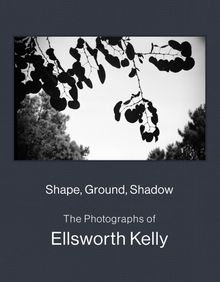| |||||||||||||||||||||||||||||||||
ARTIST MONOGRAPHS
|
|
in stock $50.00 Free Shipping UPS GROUND IN THE CONTINENTAL U.S. |
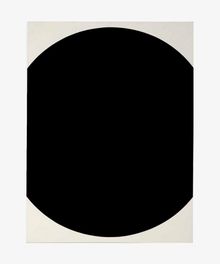 Ellsworth Kelly
Ellsworth Kelly
Published by Glenstone Museum.
Foreword by Emily Wei Rales, et al. Text by Jean-Pierre Criqui, Alex Da Corte, Suzanne Hudson, Corey Keller, Peter Eleey, Sarah Rogers.
Accompanying the large-scale traveling exhibition Ellsworth Kelly at 100, this volume celebrates the groundbreaking career of the beloved American abstractionist. This publication highlights key aspects of his multifaceted art—from his lifelong drawing practice through his later explorations of layered canvas panels. Kelly frequently revisited shapes and motifs observed throughout his career, exploring form, color, line and space through painting, sculpture, collage, drawing and photography. The fully illustrated publication highlights works from major public and private collections alongside key works from Glenstone's collection, including seminal early pieces such as Painting for a White Wall (1952) and Painting in Three Panels (1956), as well as examples from the iconic Chatham and Spectrum series. Also featured is Yellow Curve (1990), a monumental floor painting installation that spans nearly 1,000 square feet, on view for the first time in more than 30 years since it was conceived for an exhibition at Portikus am Main in Frankfurt. Essays by Jean-Pierre Criqui, Alex Da Corte, Suzanne Hudson, Corey Keller and others explore and expand upon Kelly’s canon. With three gatefolds and a tip-on cover image, the book also includes unpublished archival materials from the artist’s studio and the Glenstone archives.
Ellsworth Kelly (1923–2015) was born in Newburgh, New York. His first exhibition was held at the Betty Parsons Gallery in 1956; the Museum of Modern Art, New York, organized his first retrospective in 1973. Subsequent exhibitions have been held at museums including the Solomon R. Guggenheim Museum in New York, Tate in London and the Centre Pompidou in Paris.
PUBLISHER
Glenstone Museum
BOOK FORMAT
Hardcover, 10 x 12 in. / 314 pgs / 115 color.
PUBLISHING STATUS
Pub Date 2/27/2024
Active
DISTRIBUTION
D.A.P. Exclusive
Catalog: FALL 2023 p. 10
PRODUCT DETAILS
ISBN 9798987425411 TRADE
List Price: $70.00 CAD $101.50 GBP £62.00
AVAILABILITY
In stock
in stock $70.00 Free Shipping UPS GROUND IN THE CONTINENTAL U.S. |
 Ellsworth Kelly: Colors for a Large Wall
Ellsworth Kelly: Colors for a Large Wall
MoMA One on One Series
Published by The Museum of Modern Art, New York.
By Jodi Hauptman.
Ellsworth Kelly’s landmark 1951 work Colors for a Large Wall is the culmination of an extraordinarily productive moment in the artist’s early career, a time when he developed his singular form of abstraction. After serving in the US Army during World War II, he returned to France in 1948 and lived and worked there until 1954. Connecting with artists of an earlier generation, discovering Paris with his peers, and surveying monuments of the past, Kelly began an audacious creative journey in which, paradoxically, he sought to eliminate "invention" from the process of making art. In this volume of the MoMA One on One series, curator Jodi Hauptman looks closely at the evolution of Colors for a Large Wall, unpacking Kelly’s toolbox of close observation of the world, chance procedures, collage and the monochrome, and examining his ambition to create art on a public, architectural scale.
PUBLISHER
The Museum of Modern Art, New York
BOOK FORMAT
Paperback, 7.25 x 9 in. / 48 pgs / 35 color.
PUBLISHING STATUS
Pub Date 12/26/2023
Active
DISTRIBUTION
D.A.P. Exclusive
Catalog: FALL 2023 p. 82
PRODUCT DETAILS
ISBN 9781633451568 TRADE
List Price: $14.95 CAD $21.95
AVAILABILITY
In stock
in stock $14.95 Free Shipping UPS GROUND IN THE CONTINENTAL U.S. |
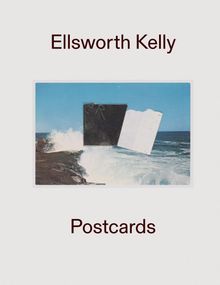 Ellsworth Kelly: Postcards
Ellsworth Kelly: Postcards
Published by DelMonico Books.
Edited by Ian Berry, Jessica Eisenthal. Foreword by Ian Berry. Text by Jessica Eisenthal, Ellsworth Kelly, Lynda Klich, Tricia Y. Paik.
Published with Tang Museum.
Over the course of more than 50 years, renowned American artist Ellsworth Kelly made approximately 400 postcard collages, some of which served as exploratory musings and others as studies for larger works in other mediums. They range from his first monochrome in 1949 through his last postcard collages of crashing ocean waves, in 2005.
Together, these works show an unbounded space of creative freedom and provide an important insight into the way Kelly saw, experienced and translated the world in his art. Many postcards illustrate specific places where he lived or visited, introducing biography and illuminating details that make these pieces unique among his broader artistic production. Ellsworth Kelly: Postcards is the most extensive publication of Kelly’s lifelong practice of collaged postcards.
Ellsworth Kelly (1923–2015) was born in Newburgh, New York. In 1948 he moved to France, where he came into contact with a wide range of classical and modern art. He returned to New York in 1954 and two years later had his first exhibition at the Betty Parsons Gallery. The Museum of Modern Art, New York, organized his first retrospective in 1973. Subsequent exhibitions have been held at museums around the world, including the Solomon R. Guggenheim Museum in New York, Tate in London, Haus der Kunst in Munich and the Centre Pompidou in Paris.
PUBLISHER
DelMonico Books
BOOK FORMAT
Hardcover, 8.5 x 11 in. / 320 pgs / 230 color.
PUBLISHING STATUS
Pub Date 3/15/2022
Active
DISTRIBUTION
D.A.P. Exclusive
Catalog: FALL 2021 p. 59
PRODUCT DETAILS
ISBN 9781636810096 TRADE
List Price: $70.00 CAD $98.00 GBP £47.50
AVAILABILITY
Out of stock
STATUS: Out of stock Temporarily out of stock pending additional inventory. |
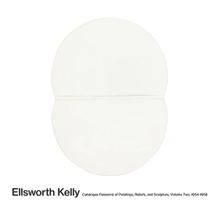 Ellsworth Kelly: Catalogue Raisonné of Paintings, Reliefs, and Sculpture Volume 2
Ellsworth Kelly: Catalogue Raisonné of Paintings, Reliefs, and Sculpture Volume 2
1954–1958
Published by Cahiers d'Art.
Authored by Kelly scholar Yve-Alain Bois in direct collaboration with the late artist’s partner and estate, this comprehensive publication contains exhaustive documentation of the work of American artist Ellsworth Kelly (1923–2015), including his paintings, sculptures and reliefs.
Picking up where the first volume left off, this publication follows Kelly from his return to New York from France in 1954 through his early years living in the artist community of downtown Coenties Slip, where he shared a studio with friend and fellow abstract painter Agnes Martin. During this formative period spent in New York City, Kelly’s style evolved beyond the foundation of his French Cubist and modernist influences and into a distinctive abstract style which fused large-format painting with a study of shapes and planar masses. By 1958, Kelly’s practice had also expanded to include sculpture, a craft inspired by conversations with his studio-mate Agnes Martin, and which would go on to be a primary medium through which Kelly’s later work is understood. The evolution of Kelly’s style experienced during the years chronicled in this publication provided a much-needed bridge from the abstraction of the 1940s to the minimalism of the 1960s.
The publication includes insightful texts and high-quality images of individual works and preparatory drawings, along with provenance information, exhibition history and bibliographic information, making it an indispensable reference tool for institutions, collectors and admirers.
PUBLISHER
Cahiers d'Art
BOOK FORMAT
Hardcover, 11.75 x 11.25 in. / 386 pgs / 570 color / 65 bw.
PUBLISHING STATUS
Pub Date 10/26/2021
Active
DISTRIBUTION
D.A.P. Exclusive
Catalog: FALL 2021 p. 86
PRODUCT DETAILS
ISBN 9782851173195 SDNR40
List Price: $395.00 CAD $539.00
AVAILABILITY
In stock
in stock $395.00 Free Shipping UPS GROUND IN THE CONTINENTAL U.S. |
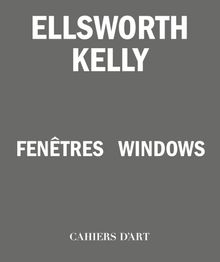 Ellsworth Kelly: Windows
Ellsworth Kelly: Windows
Published by Cahiers d'Art/Centre Pompidou.
Edited by Jean-Pierre Criqui. Foreword by Serge Lasvignes, Bernard Blistčne. Text by Staffan Ahrenberg, Yve-Alain Bois, Jean-Pierre Criqui.
This monograph was copublished by Cahiers d’Art and Centre Pompidou on the occasion of the 2019 exhibition Ellsworth Kelly: Windows, which brought together, for the first time, the six Windows made by Ellsworth Kelly (1923–2015) in France between 1949 and 1950. Kelly’s years in France were a period of perpetual invention, and are fundamental to an understanding of his work. As he wrote in 1969, “After constructing Window with two canvases and a wood frame, I realized that ... painting as I had known it was finished for me.” This signal moment is evoked through more than 80 works, paintings, drawings, sketches and photographs, along with two beautiful essays by Yve-Alain Bois and Jean-Pierre Criqui.
Ellsworth Kelly is one of the most important abstract artists of the 20th and 21st centuries, as well as a key figure in the rebirth of Cahiers d’Art: the publishing house was reopened in 2012 with an exhibition of Kelly’s work in its legendary gallery, and, in collaboration with Yve-Alain Bois and the Ellsworth Kelly Foundation, it published the first volume of Kelly’s Catalogue Raisonné of Paintings, Reliefs, and Sculpture, 1940–1953.
PUBLISHER
Cahiers d'Art/Centre Pompidou
BOOK FORMAT
Paperback, 11.25 x 9.5 in. / 152 pgs / 85 color.
PUBLISHING STATUS
Pub Date 4/14/2020
Active
DISTRIBUTION
D.A.P. Exclusive
Catalog: SPRING 2020 p. 84
PRODUCT DETAILS
ISBN 9782851173058 SDNR40
List Price: $45.00 CAD $63.00
AVAILABILITY
In stock
in stock $45.00 Free Shipping UPS GROUND IN THE CONTINENTAL U.S. |
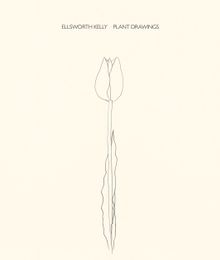 Ellsworth Kelly: Plant Drawings
Ellsworth Kelly: Plant Drawings
Published by Matthew Marks Gallery.
Text by Ellsworth Kelly.
Though best known as a painter of scrupulous hard-edge abstractions, Ellsworth Kelly (1923–2015) saw drawing plants as playing a central role in his art. “The drawings from plant life seem to be the bridge to the way of seeing that brought about the paintings in 1949,” Kelly wrote in 1969. That way of seeing, he said, was “the basis for all my later work.” The rigorous and exacting observation of the natural world that Kelly used to make his plant drawings—a practice he continued through his whole career—helped him to refine his distinctly direct brand of minimal abstraction.
First published in 2017 and quickly going out of print, Ellsworth Kelly: Plant Drawings features more than 30 drawings made by Kelly between 1949 and 2008. Kelly made these gorgeously economical line drawings from life, sometimes barely lifting the pencil as he translated each plant’s contours to paper. Focusing on direct visual impression—“nothing is changed or added,” as he put it—Kelly used the natural forms of the plants to explore some of his painterly fixations, like the effects of volume, negative space and overlapping planes. Despite the immediacy of their execution and their representational content, the most striking surprise of Kelly’s plant drawings is how much they share with his abstract paintings and sculptures.
PUBLISHER
Matthew Marks Gallery
BOOK FORMAT
Clth, 11.75 x 10 in. / 72 pgs / 32 color / 1 bw.
PUBLISHING STATUS
Pub Date 10/15/2019
Out of stock indefinitely
DISTRIBUTION
D.A.P. Exclusive
Catalog: FALL 2019 p. 63
PRODUCT DETAILS
ISBN 9781944929091 TRADE
List Price: $45.00 CAD $62.00 GBP £40.00
AVAILABILITY
Not available
STATUS: Out of stock indefinitely. |
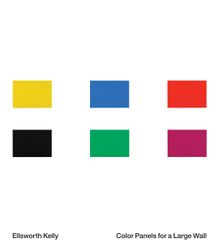 Ellsworth Kelly: Color Panels for a Large Wall
Ellsworth Kelly: Color Panels for a Large Wall
Published by Matthew Marks Gallery.
Text by Christine Mehring.
In the late 1970s Ellsworth Kelly (1923–2015) was commissioned by architecture firm Skidmore, Owings & Merrill to create an artwork for the lobby of a new office building underway in downtown Cincinnati, Ohio. Kelly responded with one of his most ambitious artworks to date, Color Panels for a Large Wall, an 18-panel painting executed in two versions. The larger, at over 125 feet wide, was the biggest painting he had ever made, and its trajectory would pass through not just Cincinnati but also Amsterdam, New York and Munich before ending up at its permanent home, the National Gallery of Art in Washington, DC, where it has been prominently installed in the I.M. Pei–designed East Building since 2004.The smaller version, over 30 feet wide, remained in the artist's possession. This catalog tells the complete story of these two remarkable paintings.
PUBLISHER
Matthew Marks Gallery
BOOK FORMAT
Clth, 8.5 x 9.75 in. / 88 pgs / 52 color / 12 bw.
PUBLISHING STATUS
Pub Date 4/23/2019
Active
DISTRIBUTION
D.A.P. Exclusive
Catalog: SPRING 2019 p. 119
PRODUCT DETAILS
ISBN 9781944929145 TRADE
List Price: $45.00 CAD $62.00 GBP £40.00
AVAILABILITY
Out of stock
STATUS: Out of stock Temporarily out of stock pending additional inventory. |
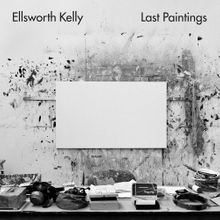 Ellsworth Kelly: Last Paintings
Ellsworth Kelly: Last Paintings
Published by Matthew Marks Gallery.
Text by Branden W. Joseph.
These final paintings, made in the months leading up to his death in December 2015, further develop the non-compositional strategies he pioneered in the late 1940s and pursued throughout his life, including monochrome paintings, shaped canvases and joined panels.
The book also includes 16 photographs by Jack Shear of Kelly’s studio as he left it on his final day of painting—a poignant record of his seven-decade advancement of a singular artistic vision.
PUBLISHER
Matthew Marks Gallery
BOOK FORMAT
Clth, 10 x 10 in. / 64 pgs / 22 color / 16 duotone.
PUBLISHING STATUS
Pub Date 9/26/2017
Out of stock indefinitely
DISTRIBUTION
D.A.P. Exclusive
Catalog: FALL 2017 p. 127
PRODUCT DETAILS
ISBN 9781944929077 TRADE
List Price: $40.00 CAD $54.00 GBP £35.00
AVAILABILITY
Not available
STATUS: Out of stock indefinitely. |
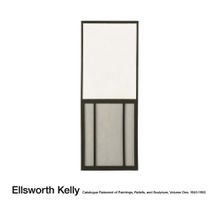 Ellsworth Kelly: Catalogue Raisonné of Paintings, Reliefs, and Sculpture Volume 1
Ellsworth Kelly: Catalogue Raisonné of Paintings, Reliefs, and Sculpture Volume 1
Published by Cahiers d'Art.
Edited by Yve-Alain Bois, Anya Bondell. Foreword by Jack Shear.
Written by Kelly scholar Yve-Alain Bois in direct collaboration with the artist, this comprehensive multivolume publication contains exhaustive documentation of each of Kelly’s paintings, sculptures, and reliefs.
The catalogue includes thorough and insightful texts, high-quality images of individual works and preparatory drawings, along with provenance information, exhibition history, and bibliographic information, making it sure to be an irreplaceable reference tool for institutions, collectors, and admirers.
This first volume is a stunning beginning to this extensive publication, with the subsequent volumes scheduled for release over the next several years. Encompassing Kelly’s work up to his return to the United States from France in 1954, the present volume covers the artist’s formative years as a student at the School of the Museum of Fine Arts in Boston and as a young artist living in Paris, where he began painting the abstract forms which would later define his career.
PUBLISHER
Cahiers d'Art
BOOK FORMAT
Hardcover, 11.25 x 12 in. / 383 pgs / 450 color.
PUBLISHING STATUS
Pub Date 10/20/2015
Active
DISTRIBUTION
D.A.P. Exclusive
Catalog: Publisher Backlist
PRODUCT DETAILS
ISBN 9782851171900 SDNR40
List Price: $395.00 CAD $560.00
AVAILABILITY
In stock
in stock $395.00 Free Shipping UPS GROUND IN THE CONTINENTAL U.S. |
 Ellsworth Kelly: Outside In
Ellsworth Kelly: Outside In
Published by Matthew Marks Gallery.
Text by Briony Fer.
Ellsworth Kelly: Outside In is, likewise, more than the sum of its parts. With an oversize format and generous images, the book introduces the artist's latest body of work in stunning color. Its introductory essay, by art historian Briony Fer, provides insight into Kelly's perpetual movement between inside and outside, past and present, two dimensions and three.
PUBLISHER
Matthew Marks Gallery
BOOK FORMAT
Hardcover, 9.75 x 12.75 in. / 56 pgs / 30 color / 3 bw.
PUBLISHING STATUS
Pub Date 8/25/2015
Out of print
DISTRIBUTION
D.A.P. Exclusive
Catalog: FALL 2015 p. 130
PRODUCT DETAILS
ISBN 9781880146903 TRADE
List Price: $35.00 CAD $40.00
AVAILABILITY
Not available
STATUS: Out of print | 00/00/00 For assistance locating a copy, please see our list of recommended out of print specialists |
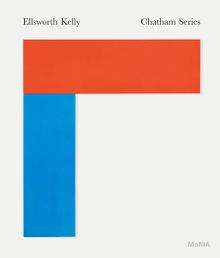 Ellsworth Kelly: The Chatham Series
Ellsworth Kelly: The Chatham Series
Published by The Museum of Modern Art, New York.
Text by Ann Temkin.
PUBLISHER
The Museum of Modern Art, New York
BOOK FORMAT
Hardcover, 9 x 10.5 in. / 48 pgs / 48 color.
PUBLISHING STATUS
Pub Date 6/30/2013
Out of stock indefinitely
DISTRIBUTION
D.A.P. Exclusive
Catalog: SPRING 2013 p. 107
PRODUCT DETAILS
ISBN 9780870708732 TRADE
List Price: $22.95 CAD $32.00
AVAILABILITY
Not available
STATUS: Out of stock indefinitely. |
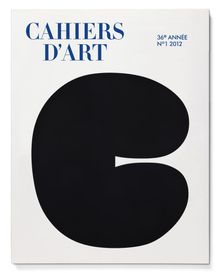 Cahiers d'Art: Ellsworth Kelly
Cahiers d'Art: Ellsworth Kelly
36th Year
Published by Cahiers d'Art.
Edited by Staffan Ahrenberg, Sam Keller, Hans Ulrich Obrist. Text by Yve-Alain Bois, Hans Ulrich Obrist, Tadao Ando, Jean-Louis Cohen, et al.
The Revue Cahiers d’Art was relaunched with this first issue in 2012 dedicated to Ellsworth Kelly. It contains an original lithograph by Kelly, and presents the work of several other artists: Sarah Morris, Cyprien Gaillard and Adrian Villar Rojas. It contains several texts, in particular those of the art historian Yve-Alain Bois, the architect Tadao Ando and Jean-Louis Cohen, historian of architecture and town planning.
PUBLISHER
Cahiers d'Art
BOOK FORMAT
Paperback, 9.75 x 12.5 in. / 136 pgs / 96 color.
PUBLISHING STATUS
Pub Date 10/23/2012
Active
DISTRIBUTION
D.A.P. Exclusive
Catalog: Publisher Backlist
PRODUCT DETAILS
ISBN 9782851171740 SDNR40
List Price: $100.00 CAD $139.00
AVAILABILITY
Out of stock
STATUS: Out of stock Temporarily out of stock pending additional inventory. |
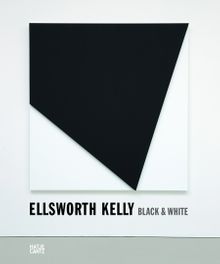 Ellsworth Kelly: Black & White
Ellsworth Kelly: Black & White
Published by Hatje Cantz.
Text by Ulrich Wilmes.
PUBLISHER
Hatje Cantz
BOOK FORMAT
Hardcover, 8.75 x 10.5 in. / 200 pgs / 127 color.
PUBLISHING STATUS
Pub Date 1/31/2012
Out of print
DISTRIBUTION
D.A.P. Exclusive
Catalog: SPRING 2012 p. 85
PRODUCT DETAILS
ISBN 9783775732178 TRADE
List Price: $60.00 CAD $70.00
AVAILABILITY
Not available
STATUS: Out of print | 00/00/00 For assistance locating a copy, please see our list of recommended out of print specialists |
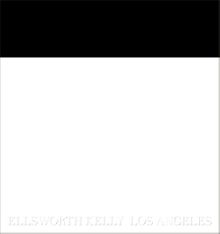 Ellsworth Kelly: Los Angeles
Ellsworth Kelly: Los Angeles
Published by Matthew Marks Gallery.
Text by Michael Duncan.
PUBLISHER
Matthew Marks Gallery
BOOK FORMAT
Hardcover, 11.5 x 12.25 in. / 40 pgs / 17 color.
PUBLISHING STATUS
Pub Date 11/30/2012
Out of print
DISTRIBUTION
D.A.P. Exclusive
Catalog: FALL 2012 p. 103
PRODUCT DETAILS
ISBN 9781880146590 TRADE
List Price: $45.00 CAD $55.00
AVAILABILITY
Not available
STATUS: Out of print | 00/00/00 For assistance locating a copy, please see our list of recommended out of print specialists |
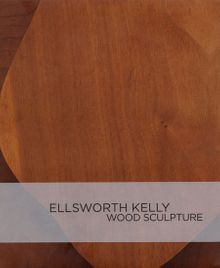 Ellsworth Kelly: Wood Sculpture
Ellsworth Kelly: Wood Sculpture
Published by MFA Publications, Museum of Fine Arts, Boston.
Text by Brenda Richardson.
PUBLISHER
MFA Publications, Museum of Fine Arts, Boston
BOOK FORMAT
Clth, 9 x 11 in. / 72 pgs / illustrated throughout.
PUBLISHING STATUS
Pub Date 10/31/2011
Out of print
DISTRIBUTION
D.A.P. Exclusive
Catalog: FALL 2011 p. 65
PRODUCT DETAILS
ISBN 9780878467662 TRADE
List Price: $45.00 CAD $60.00 GBP £40.00
AVAILABILITY
Not available
STATUS: Out of print | 00/00/00 For assistance locating a copy, please see our list of recommended out of print specialists |
 Ellsworth Kelly: Reliefs 2009-2010
Ellsworth Kelly: Reliefs 2009-2010
Published by Matthew Marks Gallery.
Text by Robert Storr.
PUBLISHER
Matthew Marks Gallery
BOOK FORMAT
Clth, 10 x 13.25 in. / 48 pgs / 24 color / 2 bw.
PUBLISHING STATUS
Pub Date 10/31/2011
Out of stock indefinitely
DISTRIBUTION
D.A.P. Exclusive
Catalog: FALL 2011 p. 130
PRODUCT DETAILS
ISBN 9781880146569 TRADE
List Price: $45.00 CAD $60.00 GBP £40.00
AVAILABILITY
Not available
STATUS: Out of stock indefinitely. |
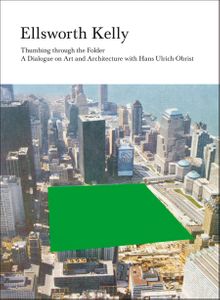 Ellsworth Kelly: Thumbing through the Folder
Ellsworth Kelly: Thumbing through the Folder
A Dialogue on Art and Architecture with Hans Ulrich Obrist
Published by Walther König, Köln/D.A.P..
PUBLISHER
Walther König, Köln/D.A.P.
BOOK FORMAT
Hardcover, 7.25 x 10 in., 80 pgs / 58 color.
PUBLISHING STATUS
Pub Date 2/28/2010
Out of print
DISTRIBUTION
D.A.P. Exclusive
Catalog: SPRING 2010 p. 56
PRODUCT DETAILS
ISBN 9781935202134 TRADE
List Price: $45.00 CAD $55.00
AVAILABILITY
Not available
STATUS: Out of print | 11/30/2012 For assistance locating a copy, please see our list of recommended out of print specialists |
 Ellsworth Kelly: Diagonal
Ellsworth Kelly: Diagonal
Published by Matthew Marks Gallery.
Text by Johanna Burton.
PUBLISHER
Matthew Marks Gallery
BOOK FORMAT
Clth, 10.75 x 13 in. / 56 pgs / 27 color.
PUBLISHING STATUS
Pub Date 9/30/2009
Out of print
DISTRIBUTION
D.A.P. Exclusive
Catalog: FALL 2009 p. 98
PRODUCT DETAILS
ISBN 9781880146514 TRADE
List Price: $45.00 CAD $55.00
AVAILABILITY
Not available
STATUS: Out of print | 00/00/00 For assistance locating a copy, please see our list of recommended out of print specialists |
Ellsworth Kelly: Tablet 1948-1973
Published by The Drawing Center.
Edited by Catherine de Zegher. Introduction by Yve-Alain Bois and Yves Aupetitallot.
PUBLISHER
The Drawing Center
BOOK FORMAT
Hardcover, 13 x 9.75 in. / 208 pgs / 188 color
PUBLISHING STATUS
Pub Date 6/15/2004
Out of print
DISTRIBUTION
D.A.P. Exclusive
Catalog: SPRING 2005 p. 146
PRODUCT DETAILS
ISBN 9780942324174 TRADE
List Price: $50.00 CAD $60.00
AVAILABILITY
Not available
STATUS: Out of print | 6/1/2005 For assistance locating a copy, please see our list of recommended out of print specialists |
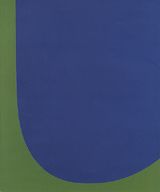 Ellsworth Kelly: Red Green Blue
Ellsworth Kelly: Red Green Blue
Paintings and Studies, 1958-1965
Published by Museum of Contemporary Art, San Diego.
Artwork by Ellsworth Kelly. Edited by Julie Dunn. Text by Roberta Bernstein, Sarah Rich, Hugh Davies, Toby Kamps.
PUBLISHER
BOOK FORMAT
Hardcover, 10 x 12 in. / 128 pgs / 82 color / 6 bw.
PUBLISHING STATUS
Pub Date 2/2/2003
Out of print
DISTRIBUTION
D.A.P. Exclusive
Catalog: SPRING 2003
PRODUCT DETAILS
ISBN 9780934418621 TRADE
List Price: $49.95 CAD $60.00
AVAILABILITY
Not available
STATUS: Out of print | 11/25/2008 For assistance locating a copy, please see our list of recommended out of print specialists |
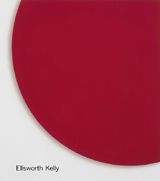 Ellsworth Kelly: In-Between Spaces, Works 1956-2002
Ellsworth Kelly: In-Between Spaces, Works 1956-2002
Published by Hatje Cantz.
Artwork by Ellsworth Kelly. Contributions by Gottfried Boehm. Text by Viola Weigel.
PUBLISHER
Hatje Cantz
BOOK FORMAT
Hardcover, 11 x 12.5 in. / 168 pgs / 70 color
PUBLISHING STATUS
Pub Date 2/2/2003
Out of print
DISTRIBUTION
D.A.P. Exclusive
Catalog: SPRING 2003
PRODUCT DETAILS
ISBN 9783775712293 TRADE
List Price: $55.00 CAD $65.00
AVAILABILITY
Not available
STATUS: Out of print | 8/10/2005 For assistance locating a copy, please see our list of recommended out of print specialists |
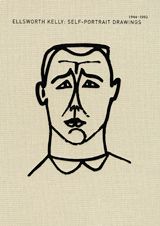 Ellsworth Kelly: Self Portrait Drawings 1944-1992
Ellsworth Kelly: Self Portrait Drawings 1944-1992
Published by Matthew Marks Gallery.
Essay by Harry Cooper.
PUBLISHER
Matthew Marks Gallery
BOOK FORMAT
Hardback, 6.5 x 9 in. / 120 pgs / 53 color reproductions.
PUBLISHING STATUS
Pub Date 9/2/2003
Out of print
DISTRIBUTION
D.A.P. Exclusive
Catalog: FALL 2003
PRODUCT DETAILS
ISBN 9781880146415 TRADE
List Price: $30.00 CAD $35.00
AVAILABILITY
Not available
STATUS: Out of print | 00/00/00 For assistance locating a copy, please see our list of recommended out of print specialists |
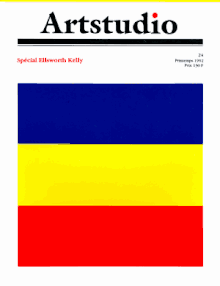 Ellsworth Kelly: Artstudio
Ellsworth Kelly: Artstudio
Published by Anthony d'Offay.
Artwork by Ellsworth Kelly. Contributions by Paul Taylor.
PUBLISHER
Anthony d'Offay
BOOK FORMAT
Paperback, 8.25 x 10.5 in. / 186 pgs / 56 color / 64 bw
PUBLISHING STATUS
Pub Date 1/2/1995
No longer our product
DISTRIBUTION
D.A.P. Exclusive
Catalog: SPRING 1995
PRODUCT DETAILS
ISBN 9780947564599 TRADE
List Price: $25.00 CAD $30.00
AVAILABILITY
